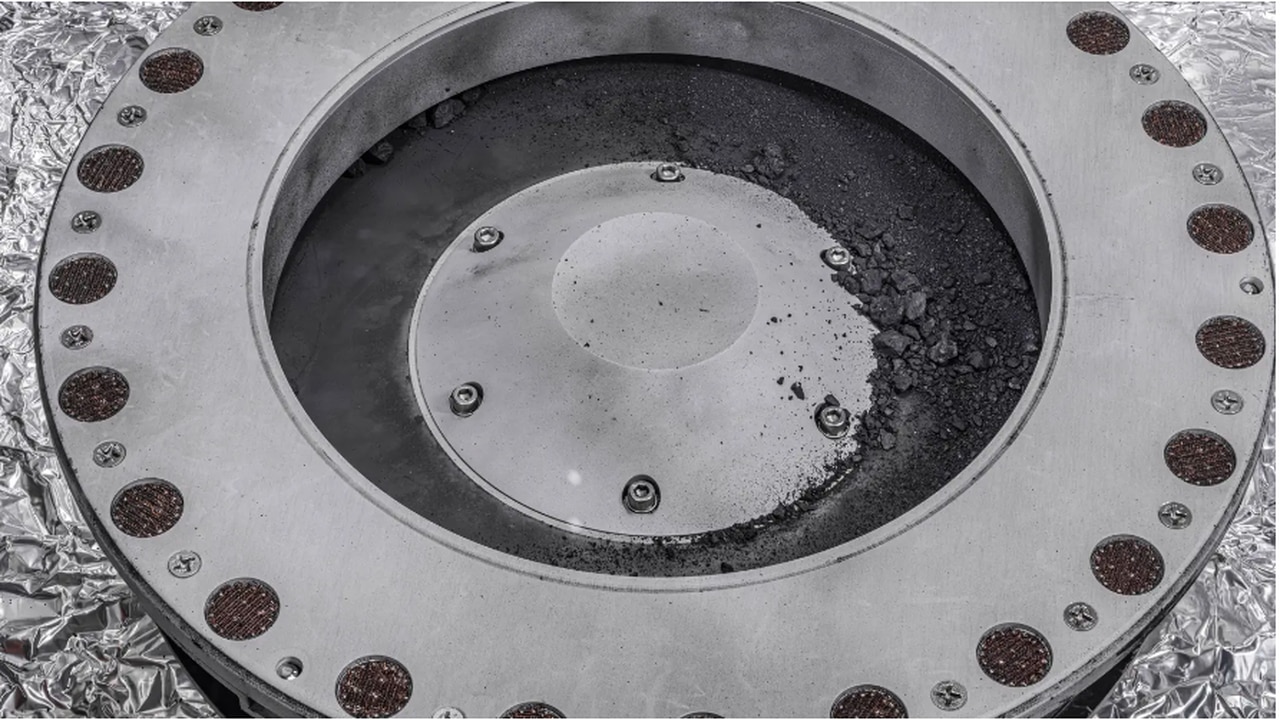NASA finds key ingredients of life in first look at Bennu asteroid sample
“The building blocks of life may be found in the rock.”
With those electrifying words suggesting life may really exist in the cosmos in a provable way and may have seeded life on Earth, NASA said today that the rocky samples from the 4.5-billion-year-old asteroid Bennu will be studied for generations. The agency revealed its initial findings today in a report on the rock found on top of the sample collecting cannister.
From what they’ve already seen outside the cannister, scientists expect “evidence of abundant carbon and water” in the samples inside. Scientists worldwide like those at the Natural History Museum say those are must-have ingredients for life. Water is No. 1 and carbon is No. 2 on the museum’s list.
“As we peer into the ancient secrets preserved within the dust and rocks of asteroid Bennu, we are unlocking a time capsule that offers us profound insights into the origins of our solar system,” said Dante Lauretta, OSIRIS-REx principal investigator at the University of Arizona, Tucson. “The bounty of carbon-rich material and the abundant presence of water-bearing clay minerals are just the tip of the cosmic iceberg. These discoveries, made possible through years of dedicated collaboration and cutting-edge science, propel us on a journey to understand not only our celestial neighborhood but also the potential for life’s beginnings. With each revelation from Bennu, we draw closer to unraveling the mysteries of our cosmic heritage.”
“The OSIRIS-REx sample is the biggest carbon-rich asteroid sample ever delivered to Earth and will help scientists investigate the origins of life on our own planet for generations to come,” agreed NASA Administrator Bill Nelson. “Almost everything we do at NASA seeks to answer questions about who we are and where we come from.”
“NASA missions like OSIRIS-REx will improve our understanding of asteroids that could threaten Earth while giving us a glimpse into what lies beyond,” Nelson said. “The sample has made it back to Earth, but there is still so much science to come – science like we’ve never seen before.”
NASA says it will save at least 70 percent of the material for research by scientists worldwide including future generations. More than 200 scientists around the world are already planning for the exploration, NASA said.
Samples will also be loaned later this fall to the Smithsonian Institution, Space Center Houston and the University of Arizona for public display, NASA said.
OSIRIS-REx is the third mission in NASA’s New Frontiers Program, managed by NASA’s Marshall Space Flight Center in Huntsville for the Science Mission Directorate at NASA Headquarters in Washington.
